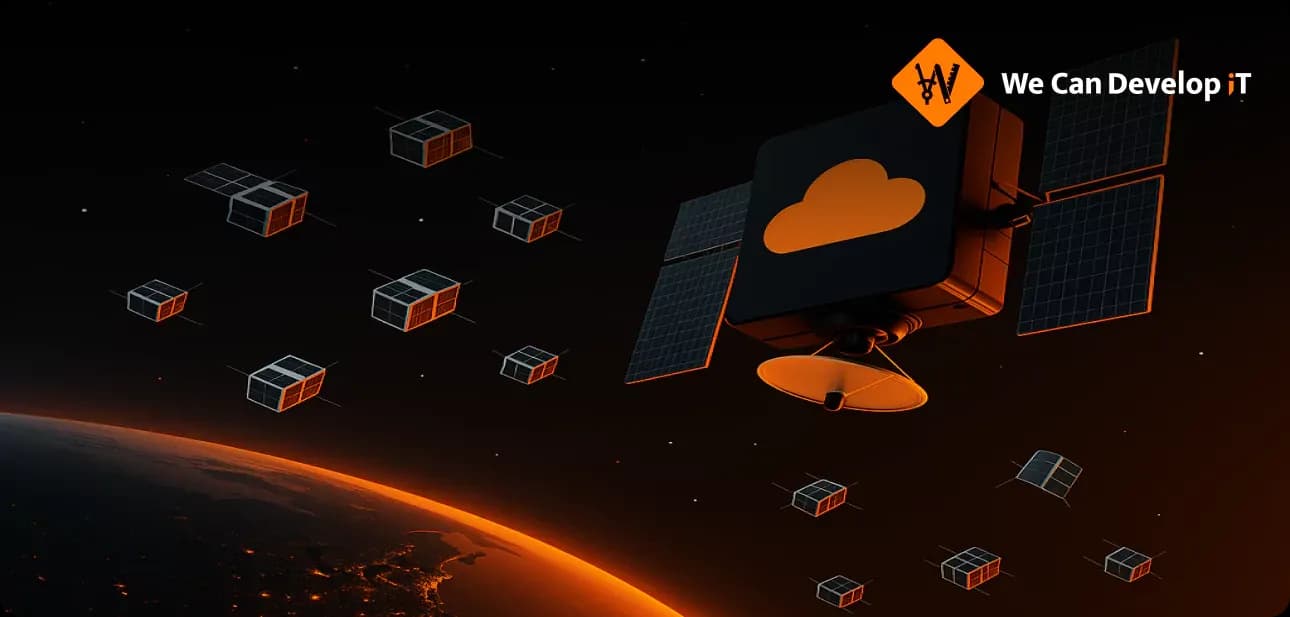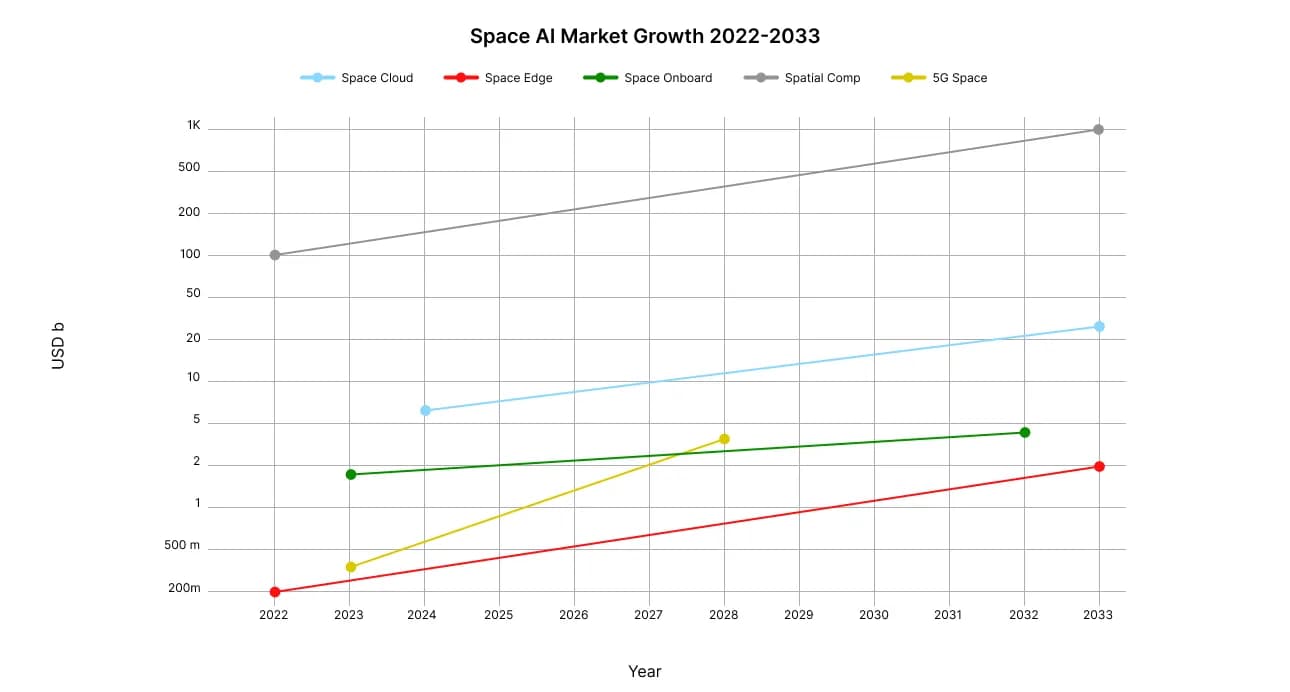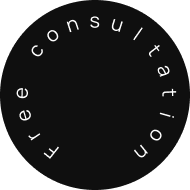Back
Updated at: October 11, 2025
Space is becoming a cloud: new computing infrastructure beyond Earth

Just ten years ago, space technologies seemed distant and exceptional - more a matter of national pride than a part of real IT infrastructure. But today, satellite constellations, orbital stations, and near-space platforms are no longer just about telecommunications and navigation; they represent a new level of cloud computing, data transmission, and Earth observation.
We are entering an era where space is not just a field for science or planetary exploration, but a working environment for IT systems. And what was once "science fiction" yesterday is today becoming subscription-based infrastructure.
Orbit - as a new edge infrastructure zone
It all started with telecommunications and satellite internet. But today, full-fledged computing capabilities are being deployed in orbit, supporting local scenarios - from data collection to analysis and storage.
The concept of edge computing, where data is processed closer to the source, is expanding: from sensors and cameras to satellites and stratospheric platforms. That is why space is starting to be called ultra-edge.
Reasons? The most relevant:
- Explosive data growth. One observation satellite collects up to 100 GB per day. Transmitting everything to Earth is impossible, so processing must be done on board.
- Megaconstellations. Many satellite constellations consist of thousands of satellites. Manual control is unrealistic. Autonomy is the key to the solution.
Examples? Please:
- The company World View is launching stratospheric Stratollite probes that hover over a designated area for weeks, providing video surveillance and real-time analytics. This is no longer just photography - it's edge analytics from an altitude of 30 km.
- The Starlink constellation already manages more than 7600 satellites. Each satellite, even in the absence of a connection with ground stations, constantly tracks its location and predicts the trajectories of other objects to avoid collisions.
Money and Growth: The Market is Taking Off
- Steady growth of the cloud computing market in space: $6.5 billion in 2024 → $25.2 billion by 2033 (16.9%)
- Excellent growth in edge computing: $200.9 million → $1.8 billion (22.64%)
- And impressive growth of 5G from space: $300 million → $3.7 billion by 2028 (CAGR 65%!)
Fact: In 2024 alone, space startups attracted $9.1 billion. And AI startups (mostly with a "space inclination") - $162.8 billion in six months.

Growth of space computing and AI markets: forecasts to 2033
Space as a hyperscaler: not a joke, but a strategy
If on Earth AWS, Microsoft, and Google are called hyperscalers, now they - and not only they - are building computing ecosystems in orbit.
- Microsoft Azure Space, in partnership with SpaceX and SES, is already offering edge infrastructure where space and terrestrial resources operate within a single system.
- Amazon Project Kuiper is not just the internet, but also a platform for cloud services in hard-to-reach areas.
- IBM, as part of the Space Tech Hub, is testing neural networks for processing satellite images directly on board.
Such solutions are becoming not just an addition to the cloud, but its extension beyond the atmosphere.
"Cloud Beyond Earth": Why Does Business Need It?
Application scenarios are becoming increasingly diverse.
- Global synchronization and access. The satellite network is becoming an alternative to traditional communication channels, especially in remote or "unstable" regions.
- Infrastructure resilience. Data is transmitted and stored not only in data centers but also in orbit - this protects against outages, disasters, and cyberattacks.
- New models of distributed AI. Algorithms can be trained and operate partially on satellites - this reduces latency, alleviates communication channels, and provides autonomy.
What was previously used only by the military or in special projects is now finding applications in energy, logistics, agriculture, and urban planning.
Data is the main asset from orbit
We live in a world where space observation is becoming as common as IoT sensor analytics.
Companies like Planet Labs take daily images of the entire Earth's surface. And these are not just "pictures," but structured data that can be integrated into BI systems, digital twins, and logistics.
For example:
- retail tracks changes in transportation flows;
- insurance companies analyze risks by zones;
- the agricultural sector receives analytical reports on soil conditions and crop yields.
And what's important is that this data is received in near real-time.
New challenges: cybersecurity, ethics, regulation
When infrastructure extends beyond the planet, issues of governance and control become more complex.
- Who controls the security of communication channels between satellites and the Earth?
- How to verify the authenticity of data from orbit?
- Who is responsible for the leakage or manipulation of space analytics?
New initiatives, such as Space ISAC (Information Sharing and Analysis Center), are already working on security standards, including for quantum-protected data transmission. And international agreements within the framework of ITU and ESA are beginning to consider not only "radio frequencies" but also aspects of data and AI.
AI right in orbit: from data collection to decision-making
Today, AI not only analyzes images from space - it works directly on satellites. This reduces latency, decreases the volume of transmitted data, and makes space infrastructure more autonomous.
- Example 1: IBM and Red Hat are testing edge AI on satellites, training models to interpret images in real-time - from wildfires to pipeline anomalies.
- Example 2: Lockheed Martin and NVIDIA are launching projects where satellites not only transmit images but also recognize objects and events, sort data, prioritize them, and transmit only valuable fragments.
This means that space is no longer just a sensor, but an active participant in the analytical cycle.

Key applications of AI in space computing infrastructure
When the data center goes into orbit
Why transmit data to Earth if it can be processed in orbit? This is how those who are developing orbital data centers think.
Microsoft Azure Space, Thales Alenia Space, Kepler Communications, and others are already working on modules that combine:
- data storage in microgravity conditions;
- computations on FPGAs and specialized processors;
- fault-tolerant IT infrastructure with automatic self-recovery.
Such solutions open up new scenarios:
- military and intelligence systems that do not depend on ground communication;
- research missions where processing speed is critical;
- cloud platforms for remote regions, where it is cheaper to deliver a signal from orbit than to lay fiber optics.
Quantum and laser data transmission: ultra-secure exchange
Modern projects strive not only for speed but also for security. And here come:
- laser communications (optical inter-satellite links), allowing data transmission between satellites at speeds of up to 100 Gbps without radio frequency interference;
- quantum cryptography, where encryption keys are transmitted by photons - with protection that is impossible in classical channels.
ESA and the China Micius Satellite have already conducted successful demonstrations of quantum-secured communication between continents. And NASA's TBIRD is testing terabit data transmission speeds from space.
Managing Orbital IT Infrastructure: A New Discipline
As data centers and analytics move to the stratosphere and orbit, IT directors and architects need to rethink:
- how to monitor and manage infrastructure that is distributed between Earth and space;
- how to integrate orbital data into CI/CD processes, digital twins, and monitoring systems;
- how to build resilience where failures can occur at an altitude of 500 km.
A new stack of tasks is emerging:
- monitoring the health of satellites and platforms;
- auditing data received from orbit;
- cybersecurity protocols in conditions of no physical access.
Deploying space as a service: Next-level XaaS architecture
The term Space-as-a-Service is being heard more and more often - and it's not a metaphor. Companies gain access to infrastructure and data from orbit on a subscription basis:
- deployment of computations and applications on stratospheric platforms (example: World View, Near Space Labs);
- imaging, analytics, and monitoring with automatic API access (example: Planet Labs, Umbra);
- data transmission in global satellite networks (example: Starlink, Kuiper).
Result - the availability of space as a component in the architecture of any digital business: from supply chain to ESG analytics.
Future business models: who and why is going to space
Space infrastructure is no longer the prerogative of government programs. Private companies are actively entering the niche because:
- data from orbit is a competitive advantage: more accurate forecasts, faster response, lower risks;
- distributed processing is resilience and flexibility in the era of geopolitical and climate risks;
- their own nodes in the stratosphere are an alternative to vulnerable communication channels.
Large banks analyze weather and crop yields for investment decisions. Energy - builds digital twins based on images. Freight carriers are optimizing routes.
Space and Sustainability: Not Just Technology, But Responsibility
One of the main challenges is environmental and regulatory sustainability. Today, there are already more than 100,000 fragments of space debris in near-Earth space. And the increase in private launches could exacerbate the problem.
Companies operating under the Space-as-a-Service model are required to:
- incorporate responsible satellite design (with the possibility of recycling);
- comply with radio and orbital spectrum regulations (ITU , UNOOSA);
- ensure transparency in data usage (in the spirit of the AI Act and future EU space regulations).
In conclusion: how businesses should prepare for the era of orbital IT
We are entering a new chapter of digital transformation, where the boundaries between "Earth" and "cloud" are literally disappearing. Space is becoming:
- infrastructure (edge and cloud);
- a source of data (for AI and business analytics);
- a platform for applications (XaaS, IoT, monitoring).
If you are a CIO, architect, or leader of digital initiatives, it is important not to fall behind the trend:
- explore the possibilities of integrating orbital data into business processes;
- start pilots with Space-as-a-Service providers;
- incorporate space-based observation, communication, and edge analytics into your strategy.
Space is no longer the future. This is a new area of your IT architecture. And whoever integrates it into their business first will gain a real advantage.
Summary:
The landscape of space technology is evolving, transforming from a realm of national pride into a vital component of modern IT infrastructure. Satellite constellations and orbital platforms are now integral to cloud computing, data transmission, and Earth observation, marking a shift toward treating space as an ultra-edge computing environment. The growth of data, driven by high-capacity observation satellites, necessitates on-board processing capabilities, while the sheer scale of satellite constellations demands autonomous operations. Companies are developing innovative solutions, such as stratospheric probes and extensive satellite networks, to enhance data collection and analytics. The space cloud computing market is projected to experience significant growth, with startups attracting substantial investments and established tech giants creating integrated ecosystems in orbit. This new model supports diverse applications, including global communication and disaster resilience, across various sectors beyond military use. However, the expansion into space raises critical questions regarding cybersecurity, data authenticity, and regulatory governance. Advanced technologies, including AI and quantum communications, are being employed to enhance the functionality and security of space-based infrastructures. As businesses increasingly utilize space as a service, they must adopt responsible practices to address environmental sustainability and regulatory compliance. Organizations are encouraged to explore the integration of orbital data into their strategies to capitalize on the advantages offered by this emerging field.
Read also:
spacecomputing
orbitalcloud
edgecomputing
satelliteinfrastructure
cloudinspace
AIinorbit
spaceasacloud
spaceasaService
spaceXaaS
orbitalIT
infrastructureinspace
datainorbit
satelliteAI
spaceanalytics
quantumcommunication
laserdatatransfer
stratosphericplatforms
spacecybersecurity
spaceobservation
orbitaldatacenter




